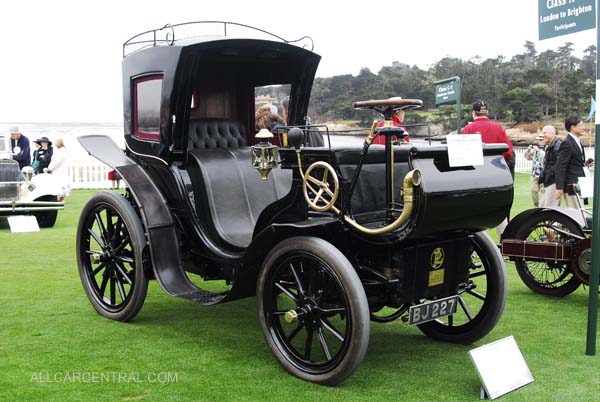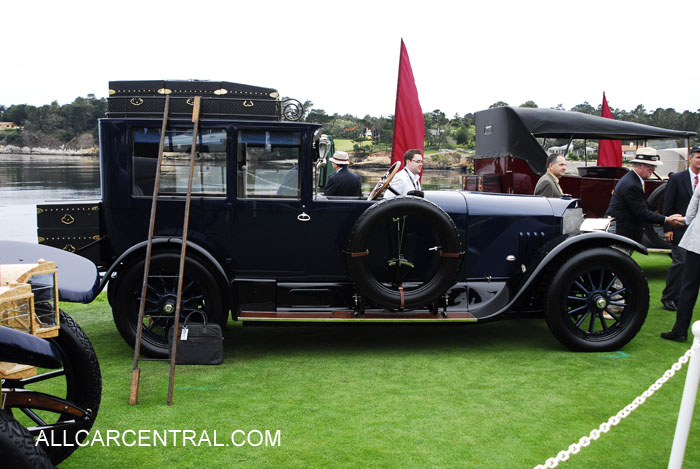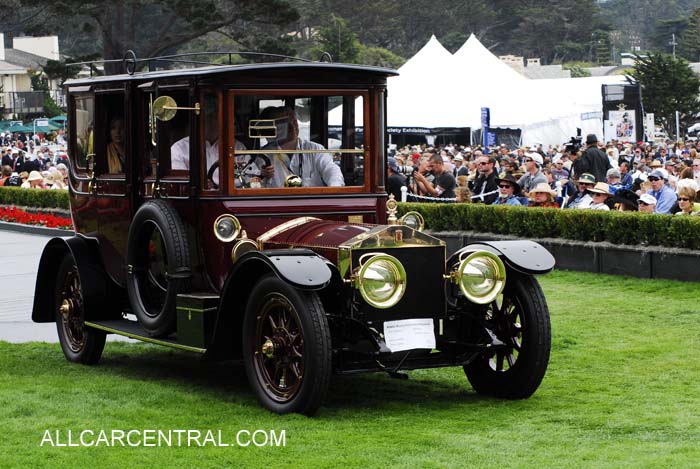The Chauffeur
By Geoff Wheatley


The Chauffeur by Geoff Wheatley
We all have been subjected to various TV programmers set in the turn of the twentieth century where the well heeled had a large home several servants and of course at least one or more grooms to look after the horses, necessary in order to travel in semi comfortable carriages. However by the time the twenty first century was ten years old a completely different means of transport was popular, the horseless carriage. In as much that grooms were required to look after the horses much the same requirement was needed for the motor carriage. Very few owners of these machines knew anything about the internal combustion engine or brakes, or lights, (such as they were) so a new breed of motor groom was required. They became known as the "Chauffeur'. the skilled individual who could maintain the motor car, and drive it when required.

Panhard et Levassor 10-HP 1901. The Owner (passenger) sat back in the relative protection of the"Cab".
Where there was once a need for several house grooms now the task could be handled by one individual. This of course means that this person was in the unique position for the time, of truly being virtually indispensable.
Many chauffeurs worked on a formal legal contract negotiated at the end of each year when the other staff received their annual pay and a new uniform. Like the chef, butler or housekeeper the chauffeurs were retained on a contract basis, and the terms negotiated each December.
Like the chef the chauffeur needed special tools in order to keep the motor carriage on the road and these were usually his own property. It was also important that he should have access to the motor car, or even motor cars as some owners had more than one vehicle. This required that he should have a special apartment adjacent to or even part of the estate garages. No sharing a bed room with another servant in the loft of the house that was usually cold and uninviting.
If the chauffeur was married his wife was usually found a suitable task within the servant structure, nothing over demanding but enough to warrant the couples tenure. For example, if she could sew as many educated women could at that time, she could be in charge of the servants clothes, ensuring that they were always acceptable. She could also assist the house keeper who, like the Butler ran her domain with a firm hand. In the average wealthy household the staff could average twenty or more not counting the gardeners who were sub labor engaged on a daily basis. They could also earn a few extra pennies washing the motor car/cars and polishing the exterior.
It was not unknown for the kitchen to over order from the food suppliers and sell off the surplus to the locals. The chauffeur may also have the same type of arrangement with the local garage who would supply oil and gasoline.
You might ask why would anyone be silly enough to do such things when they could have their contract suspended or worse still get involved with the law.
The answer is simple, the more cars purchased the greater need for their services so if you lost one job you would soon get another. In short they were in keen demand.

Mercedes 28-60 HP Tourer 1915. The chauffeur sat out in the open in all weather conditions, possibly a carry over from the horse drawn "Hanson Cab".
The advance of technology played a large part to the end of the contract chauffeur, Vehicles became simpler to drive and needed less attention. Example of this was the need for an oil change from once every thirty miles to once every hundred. By the time WW I One came along it was once every 500.
New owners were staring to enjoy the delights of driving so they tended to use the car on a regular basis. Even more startling women became drivers especially during the war and of course after it ended.

Rolls-Royce Silver Ghost Double Pullman Limousine 1910
The need and role of the chauffeur diminished to simply being the driver dressed in a fancy uniform who when not busy kept the car clean. Of course there still were exceptions. If your fancy turned to being a Rolls Royce owner you could only employ a driver trained by RR. In short the driver came with the car, at a Rolls price of course!
Geoff Wheatley

All Cars • • Racing • • VINTAGE • • Shows • • Gallerys • • Contact
